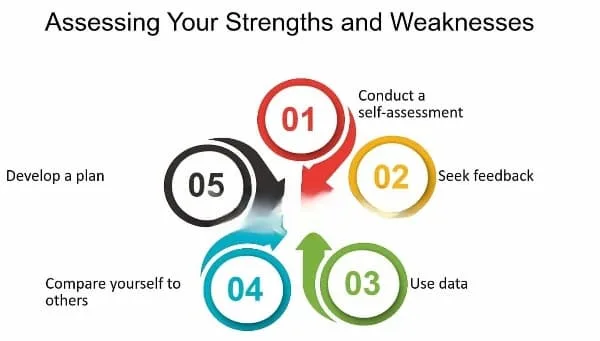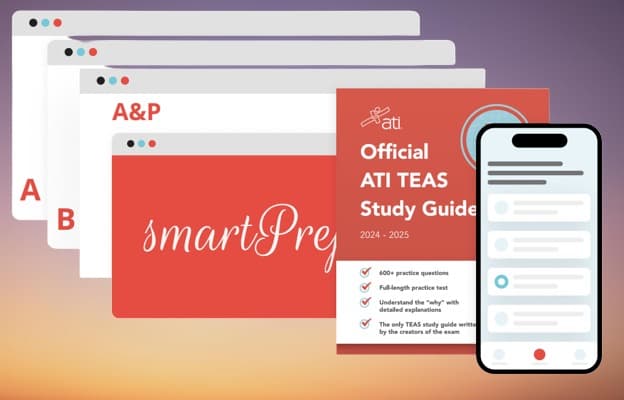Introduction
Analyzing your practice tests allows students to track their progress. You will easily monitor your progress over time. Tracking your progress helps you remain motivated and will also gauge your readiness to face the TEAS test.
This article looks at how students can analyze their TEAS test practice results, the components of a great TEAS exam analysis, identify their strengths and weaknesses, and adjust their study strategies based on the analysis to improve their overall performance.
Components of Effective TEAS Test Practice Analysis
What exactly does a TEAS test practice analysis overview look like? This section covers the components of an impressive TEAS test practice review. The first aspect of a practical TEAS test practice analysis is:
1. Review Correct and Incorrect Answers
Ensure you check out both the correct and incorrect answers. The correct responses will reinforce your understanding of the concepts and show your strengths. The wrong answers give you what should have been the proper choices. They will allow you to discover your mistakes and adjust accordingly in the future. Identifying patterns and trends in answering questions will also help maximize TEAS practice test feedback.
It helps students check for repeating trends when answering questions in a given section and understand the reasoning behind the repeating trends of failed questions. The analysis will also help you know the logic behind those failed questions. Why did you provide the answers you provided? From there, you will understand the correct answers and eliminate the incorrect ones. You will also address any gaps in knowledge and underlying misconceptions.
2. Analyze Time Management and Pacing
This practice test analysis will assess the time you spend on every question. It will point out whether you are spending too much time on given exam sections. The analysis will also recommend the average time to handle each question. It will also help identify areas of improvement in time management.
The analysis will offer brilliant suggestions for sharpening your time management skills. You will probably be told to always start with the easy questions while leaving the challenging ones for later, skim through passages first to get the idea in the text, or read through the questions before reading the passage.

These impressive TEAS test practice analysis strategies help with pacing during the test. Another important hack to help with time management is summarizing the passage using key points and highlighting the main ideas.
3. Evaluate Test-Taking Strategies
A good TEAS test practice analysis should evaluate your test-taking strategies. Ideally, it should reflect on the approaches you used to handle the practice tests, identify ineffective and practical strategies, and adjust them based on the performance outcomes. The process is crucial since it helps improve test performance and enhance your test-taking skills. Reflecting on the approaches students used in the practice tests allows them to investigate the effectiveness of the strategies.
By looking at their performance and outcomes, the TEAS practice test evaluation techniques help students determine what strategies worked and which didn’t. They will then look for ways to improve on the strategy that failed to work. Reflective practice helps identify strengths and weaknesses in TEAS practice. That makes them understand what they must do to enhance the failed strategies, such as horning them or leaving them out entirely for improved results.
From there, you can adjust your strategies accordingly. If you used first to read the passages in the English section and then go to the questions, you would start with going through the questions first and then read the passage. That way, you will quickly know what to look for in the passage.
If you waste lots of time on challenging questions with no breakthrough, you will start working on the easy questions and then handle the challenging ones. Incorporating feedback from the test practice analysis will help you modify your strategies and optimize your performance in the TEAS test.
How To Identify Strengths and Weaknesses
One popular strategy is topic-based analysis. It entails categorizing questions by different subjects to examine the performance in each topic. Breaking down test content into topics enables individuals to identify their weaknesses and strengths more precisely. It allows students to prioritize areas that require improvement while capitalizing on their strongholds.
1. Question Type Analysis
Students can fully prepare by enhancing TEAS test preparation with practice results analysis. One crucial technique is question-type analysis. The analysis entails identifying the commonly missed question types, understanding and creating strategies for given question types, and practicing targeted review on different question types. Question-type analysis is also helpful for questions such as true/false, multiple-choice, oral, and computational questions.
For example, students must fully understand the distractor’s role while looking at the multiple-choice questions. They must know the incorrect answers and how they are designed to challenge students. Recognizing patterns in the wrong answers helps students refine their strategies in answering multiple-choice questions. Actual/false questions become challenging since students have only two answers. Understanding such questions’ characteristics enables them to figure out the wrong and correct answers.
2. Feedback From Practice Tests
By improving TEAS test performance through analysis, aspiring nursing students can boost their admission chances. Feedback from practice tests helps them determine where they are doing poorly or well, allowing them to prepare fully for the TEAS test.
Feedback from the practice tests involves two elements: a focus on the student’s learning and how it has been showcased in the test and an emphasis on furthering their learning. Great feedback should explain why the student received a particular grade, identify different qualities in the answers, and guide learners on improving. It should also help the student develop the ability to monitor, evaluate, and regulate their learning.
Great feedback ought to be timely, constructive, and meaningful. Constructive feedback outlines a student’s weak and strong points, while timely feedback is delivered when the mind is fresh before the student starts working on another task. Meaningful feedback often targets the individual needs of a particular student to help them improve their TEAS test results.
How To Adjust Study Strategies Based On Analysis
To effectively adjust strategies, students ought to set SMART goals. These are specific, measurable, achievable, relevant, and time-bound. This approach enables students to focus on essential areas that require improvement. Thanks to the SMART study strategy, students can create personalized study plans. The TEAS test practice analysis should encourage students to develop study plans to review the weak areas identified by the analysis. More time in these areas means the students will improve their understanding and overall performance in the particular subject.
Your study schedule should also incorporate quizzes and practice tests. This is another brilliant study strategy based on the TEAS test practice analysis. More practice tests and quizzes from reputable sources means a better understanding of the TEAS questions’ format, style, and timing hacks. Quizzes will also let you know the topics and sections more likely to appear in the exam since they will be repeated in several quizzes.
Utilize Resources For Further Improvement
After analyzing TEAS test practice results, learners can improve by utilizing various reliable resources. That may include reviewing the study materials and resources. These resources include reputable online sites and textbooks that cover the TEAS test. Going through these materials will help reinforce the concepts you are already aware of and help with the answers to the questions you got wrong.
Seeking assistance from study groups and tutors is also resourceful, as you will receive personalized instructions on what you could have done to get the question right. They will also correct and guide you on concepts you could be challenged with. Study groups offer a collaborative learning environment where learned individuals can ask questions, share strategies, and learn new ideas from each other. Study groups and reliable tutors can be found online or in community organizations.
Aspiring nurses can also use online forums and communities for advice and support. These are valuable resources since they allow individuals to connect and share strategies and experiences for the TEAS test. Post a question or concern in any of these online forums, and you will be sure there will be someone who knows what information you seek. They will guide you stepwise until you understand the concept.
Understand The Significance of Analyzing TEAS Test Practice Results
Evaluating TEAS practice tests is crucial to most aspiring nursing students. It lets you understand where you need to improve and what questions usually challenge you; you will also understand whether time is a constraint when handling some test sections. With the TEAS test practice review, you will easily enhance your study strategies to improve your overall performance.
Most practice tests are designed to take the actual test’s structure, style, and subject areas. That means taking the practice test helps determine your level of mastery in different examinable areas. From the TEAS test practice analysis, you will get answer explanations for every question you failed and the relevant study guide lessons to help reinforce the missed concepts. Students should regularly take these practice tests when preparing for the TEAS test as it builds confidence and morale to face the actual exam.
The TEAS practice test feedback helps students know their strengths in different subjects. From taking the practice test, you will see whether you are great at math, reading, and science and which sections to be specific about. That means you will only do little to revise on these areas. Instead, you will optimize study strategies with TEAS practice analysis to work on your weaknesses effectively. The feedback will thus help improve your performance drastically.
Conclusion
Analyzing your TEAS test practice results could be the best thing you ever did as a nursing student. The TEAS test practice analysis will let you know the concepts you fully understand and the ones you need help grasping. It will expose those weak links in your studies that you need additional assistance from, whether through tutors or other resources such as textbooks and reliable websites. Some key techniques to improve your TEAS score include reviewing the correct and incorrect answers, analyzing time management and pacing, and evaluating your test-taking strategies. Use these remarkable hacks to improve your score and gain admission.




